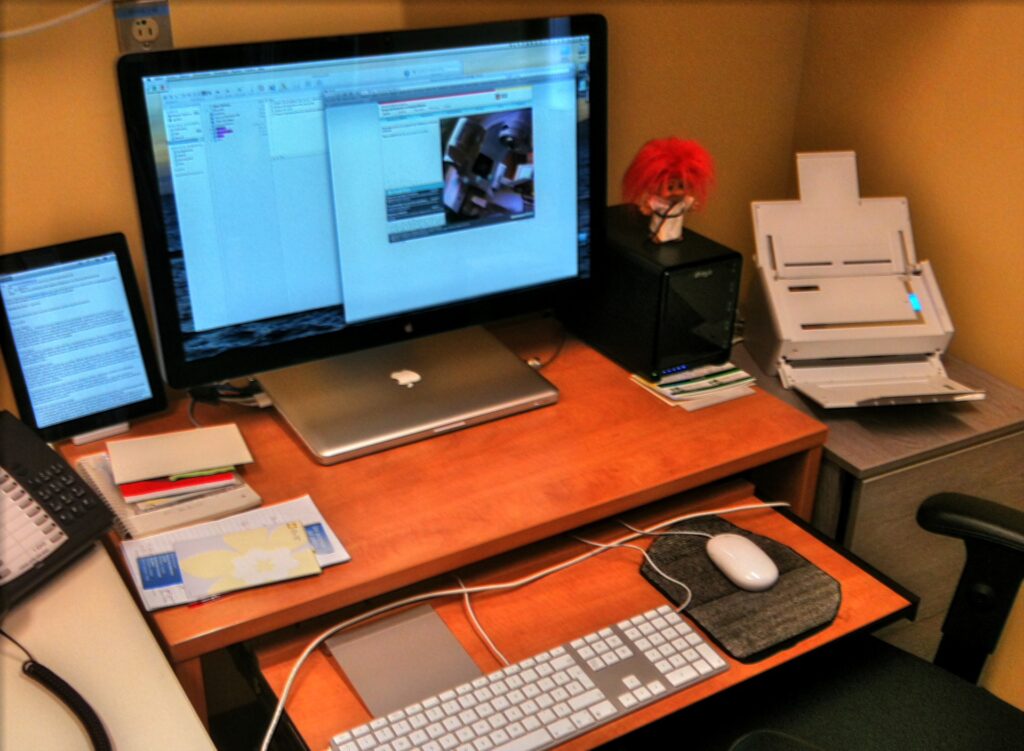Upgrade cycles used to take place annually and many people would just dispose of most of last year’s tech equipment to make room for whatever new equipment came out. A combination of an international shortage of semiconductors, the end of Moore’s Law and the release of certain types of efficient open source software have encouraged countless small business IT department staffers to keep their existing gear in service longer.
In some cases, people are even going out of their way to acquire used devices and breathe new life into them. Education market customers and others who have extremely tight budgets are among those who stand to benefit most from these kinds of policies. That’s especially true of those who are trying to forestall new purchases due to current market conditions.
Restoring & Updating Current Machines
With Moore’s Law having more or less expired, it’s unlikely that today’s commodity PC hardware is significantly different from what was made a few years ago. File system aging along with a lack of software updates for OS implementations that no longer leave support is likely to mean that machines with reasonable specs aren’t as performant as they should be. Third-party utilities have long been the easiest way to deal with this sort of issue, such as those that permit users to author a new partition table while leaving existing data structures in place.
This is somewhat similar to past technologies that allowed users to upgrade a FAT32 file system used on the Microsoft Windows platform to NTFS without having to reformat a device. Data structures could simply be drawn around the more primitive allocation tables used by FAT32 and create a more performant matrix for data storage. Creative IT technicians are today using this to restore damaged master file tables and keep existing machines operating longer in spite of any corruption that they might have suffered in the past.
Nevertheless, networked machines become inherently unsafe when it’s no longer possible to patch them. Some organizations that rely on older software are actually forgoing software solutions altogether and looking at the problem from a completely different angle.
Throwing New Hardware at Old Installations
You wouldn’t want to surf the web in 2021 with a PC that runs Windows XP, but they’re still very much necessary in certain types of industrial and medical applications. Due to the nature of the peripherals that machines in these sectors have to interface with, technicians have to run the OS on bare metal and can’t use emulators or containers to get the job done. This presents an interesting challenge, since inadvertently connecting one to a network would potentially allow it to become a potent attack vector.
Taping over RJ-45 jacks seems like an odd practice, but doing so can prevent anyone from plugging in an Ethernet cable. Technicians who do so also have to make sure that they remove any wireless networking cards. Once they do, they shouldn’t have much difficulty continuing to use these machines assuming that their motherboards are still in decent shape.
Mobile computers often need little more than a new AC adapter or charger to maintain functionality, since these were built with ruggedness in mind even in the past. A machine with a faulty battery can still be used in a fairly productive way merely by leaving it plugged in the wall. That being said, there does come a time when little can be done to save something. At that point, these are often looked at as a source of very useful parts.
Salvaging Components from Faulty Systems
Crafty system administrators have long kept failed machines around with the intent of using them to refurbish field units. This practice was usually limited to devices that were of like models. You didn’t normally see too many people salvaging circuit boards from one device to serve the needs of something very different.
Standardization has gotten to the point where this is a real possibility, however. Considering that any functioning 5V USB charger is essentially equivalent and some mobile devices no longer come with chargers, IT departments are finding that it’s a good idea to hang onto functioning blocks even when disposing of the rest of a device. Micro USB charging cables, stands and many other essentially platform-neutral components are also relatively easy to swap between devices.
Assuming that it becomes easier once again to acquire electronic components, IT department staffers may no longer have to be so careful with the equipment they have. However, those that stay the course could stand to save quite a bit of money in the future.
